Srimanta Mandal
Image Superresolution using Scale-Recurrent Dense Network
Jan 28, 2022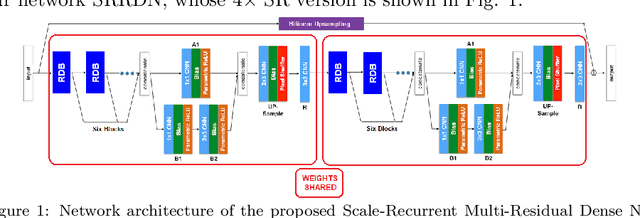

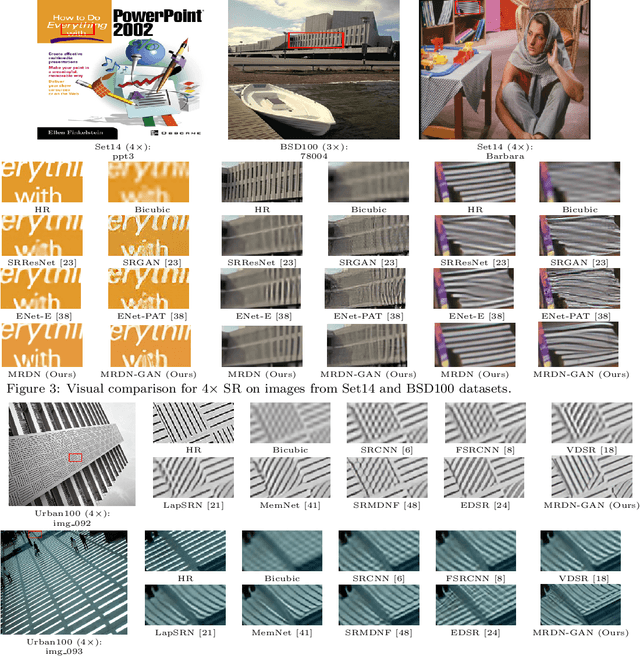
Abstract:Recent advances in the design of convolutional neural network (CNN) have yielded significant improvements in the performance of image super-resolution (SR). The boost in performance can be attributed to the presence of residual or dense connections within the intermediate layers of these networks. The efficient combination of such connections can reduce the number of parameters drastically while maintaining the restoration quality. In this paper, we propose a scale recurrent SR architecture built upon units containing series of dense connections within a residual block (Residual Dense Blocks (RDBs)) that allow extraction of abundant local features from the image. Our scale recurrent design delivers competitive performance for higher scale factors while being parametrically more efficient as compared to current state-of-the-art approaches. To further improve the performance of our network, we employ multiple residual connections in intermediate layers (referred to as Multi-Residual Dense Blocks), which improves gradient propagation in existing layers. Recent works have discovered that conventional loss functions can guide a network to produce results which have high PSNRs but are perceptually inferior. We mitigate this issue by utilizing a Generative Adversarial Network (GAN) based framework and deep feature (VGG) losses to train our network. We experimentally demonstrate that different weighted combinations of the VGG loss and the adversarial loss enable our network outputs to traverse along the perception-distortion curve. The proposed networks perform favorably against existing methods, both perceptually and objectively (PSNR-based) with fewer parameters.
Deep Networks for Image and Video Super-Resolution
Jan 28, 2022
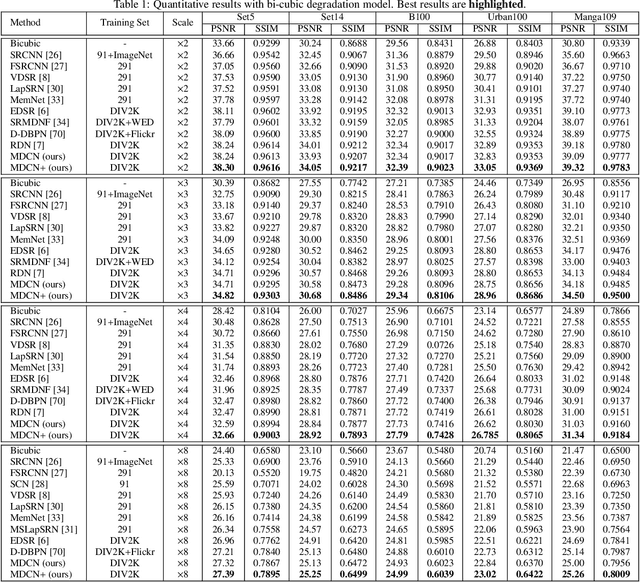

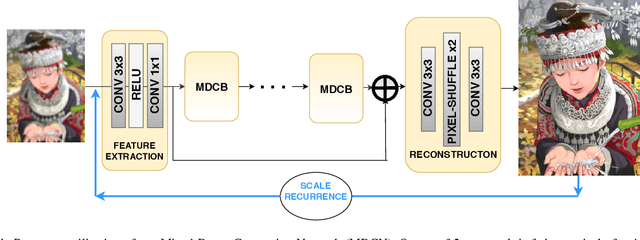
Abstract:Efficiency of gradient propagation in intermediate layers of convolutional neural networks is of key importance for super-resolution task. To this end, we propose a deep architecture for single image super-resolution (SISR), which is built using efficient convolutional units we refer to as mixed-dense connection blocks (MDCB). The design of MDCB combines the strengths of both residual and dense connection strategies, while overcoming their limitations. To enable super-resolution for multiple factors, we propose a scale-recurrent framework which reutilizes the filters learnt for lower scale factors recursively for higher factors. This leads to improved performance and promotes parametric efficiency for higher factors. We train two versions of our network to enhance complementary image qualities using different loss configurations. We further employ our network for video super-resolution task, where our network learns to aggregate information from multiple frames and maintain spatio-temporal consistency. The proposed networks lead to qualitative and quantitative improvements over state-of-the-art techniques on image and video super-resolution benchmarks.
Mitigating Channel-wise Noise for Single Image Super Resolution
Dec 14, 2021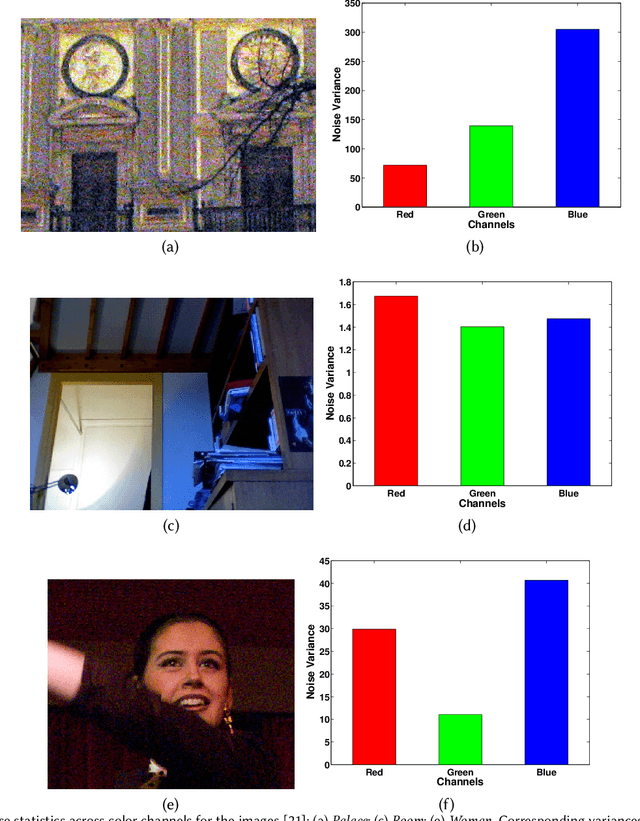
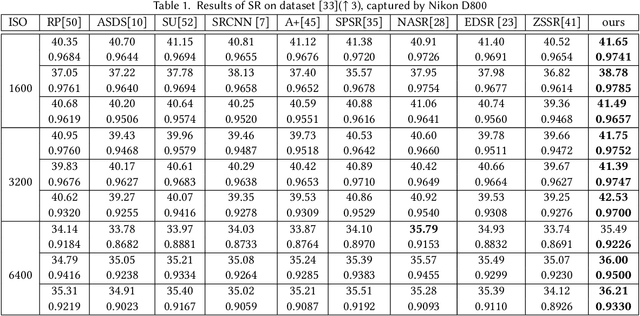
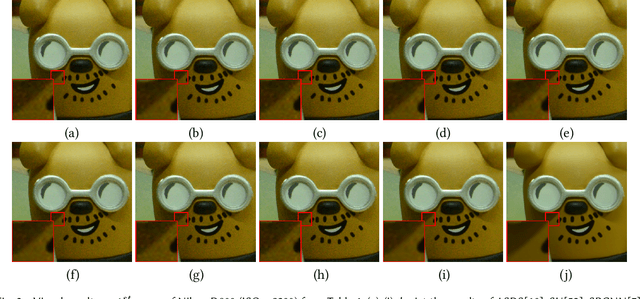
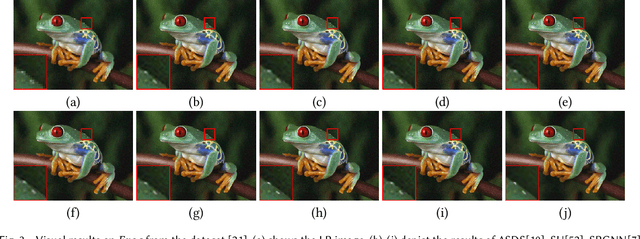
Abstract:In practice, images can contain different amounts of noise for different color channels, which is not acknowledged by existing super-resolution approaches. In this paper, we propose to super-resolve noisy color images by considering the color channels jointly. Noise statistics are blindly estimated from the input low-resolution image and are used to assign different weights to different color channels in the data cost. Implicit low-rank structure of visual data is enforced via nuclear norm minimization in association with adaptive weights, which is added as a regularization term to the cost. Additionally, multi-scale details of the image are added to the model through another regularization term that involves projection onto PCA basis, which is constructed using similar patches extracted across different scales of the input image. The results demonstrate the super-resolving capability of the approach in real scenarios.
 Add to Chrome
Add to Chrome Add to Firefox
Add to Firefox Add to Edge
Add to Edge